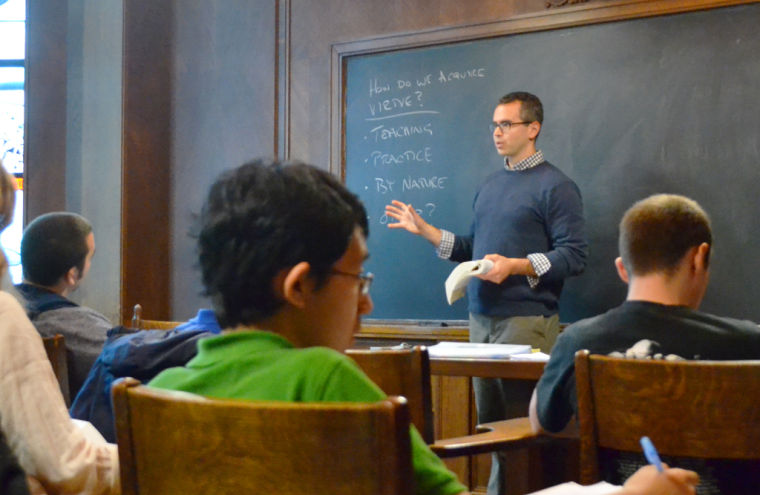Students, professors unsatisfied with nationality room settings
January 31, 2013
Last semester, around Halloween, Pitt English Professor Joshua Lapekas was teaching in the Czechoslovak room when a man dressed as the lion from the Wizard of Oz walked in, interrupting his lesson.
“You have to deal with constant intrusions — the public thinks that because the nationality rooms are a part of a tour, that they can peek in any time they want,” he said about the occasionally “difficult popularity” of the nationality rooms.
This type of incident, among others, has many professors requesting room changes to avoid holding class in one of the 29 nationality rooms that each represent a foreign culture. This, however, is not always easily done, as it requires the cooperation of the professor, department and registrar.
The Office of the Registrar works with moving classes to different rooms. Specifically, Dan Stump, a member of the Office of the Registrar’s classroom management team, works to coordinate room accommodations. Stump said that each department in the school has one person that works with the registrar, and they assist the professor in room changes.
This representative must then fill out a request for the professor, and the registrar then has to see if the switch is even possible. Stump said the Registrar’s Office didn’t keep a record of professors who request to transfer out of nationality rooms.
“During the busier classroom hours of the day, every room on campus is booked. Thus, making it impossible to switch some professors from their classrooms,” Stump said.
Every nationality room except for the Syria-Lebanon and Early American rooms, which are closed to the public, is used daily, and Stump went on to say that the office is as accommodating as it possibly can be in making room changes.
Although the nationality rooms attract many tourists because of their elaborate decoration, both students and professors alike do not always find them to be the most effective areas for lecture.
Lapekas said he has taught in many nationality rooms and noted the historical brilliance they bring to the Cathedral. He said the rooms, though, may be a little too historical for current times.
“The nationality rooms are not technologically equipped,” he said. “I asked media services to supply a screen, projector and speakers last semester so that my Seminar in Composition could watch a film. The setup took forever, the speakers were weak and tiny, and the picture quality was God-awful. The whole thing was a bust.”
For some students, the challenges of class in the nationality rooms goes beyond their lack of technological capabilities.
Freshman Dan Kohan liked the antique feel the room possessed, but he was not too crazy about having class in the Czechoslovak room.
“I’m left-handed and all of the desks, which are already crammed as it is, are all right-handed desks. It’s basically impossible to spread anything out onto such crammed desks, as well,” Kohan said.
Another freshman, Lexie Brown, has had class in the Japanese, Scottish and Italian rooms. Reiterating Kohan, Brown said that she enjoyed the atmosphere of the rooms and how they expressed cultures of different nations, but that was about it.
“I dislike the uncomfortable seating in the classrooms. Also, the Italian and Scottish rooms are very dark,” she said.
The nationality rooms, however, still seem to pull people in. Stump said that oftentimes, the nationality rooms are the most requested rooms on campus by many professors and students.



